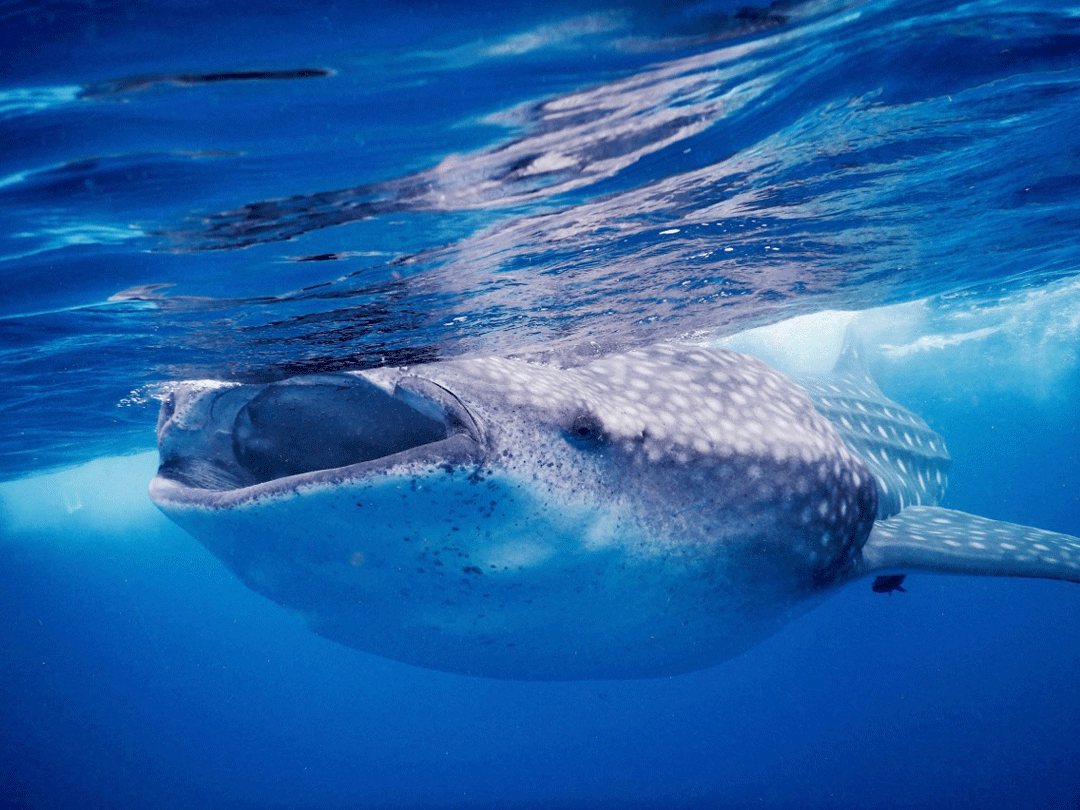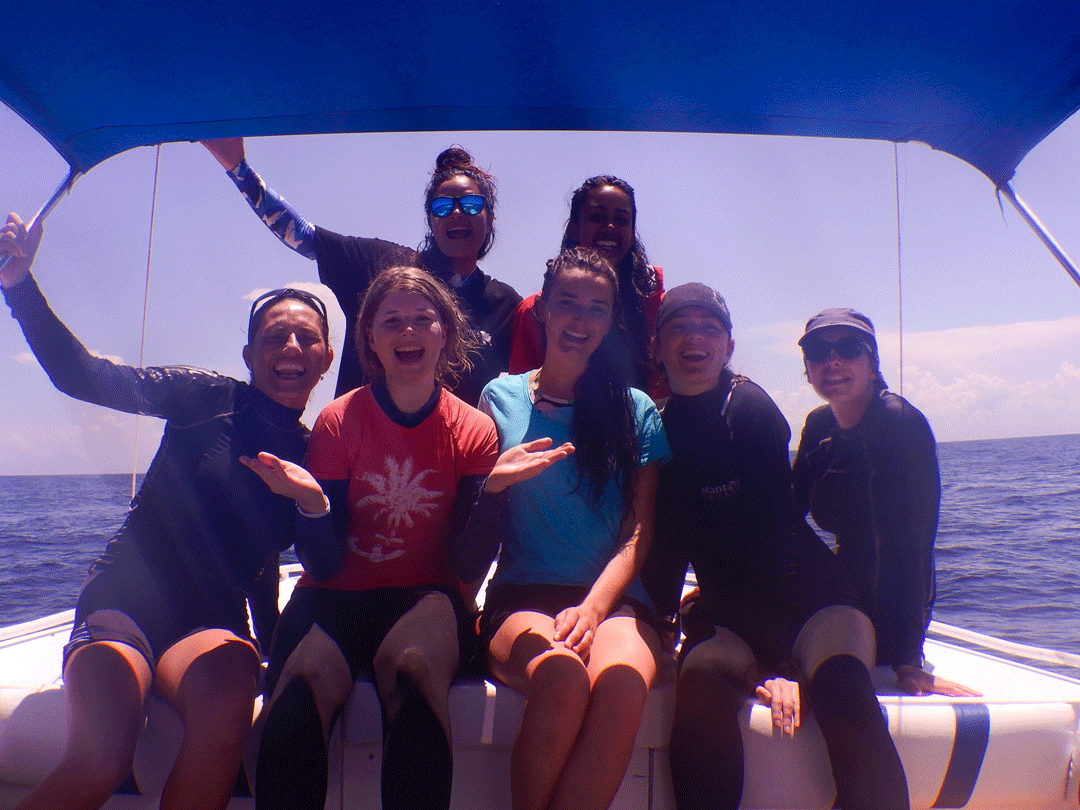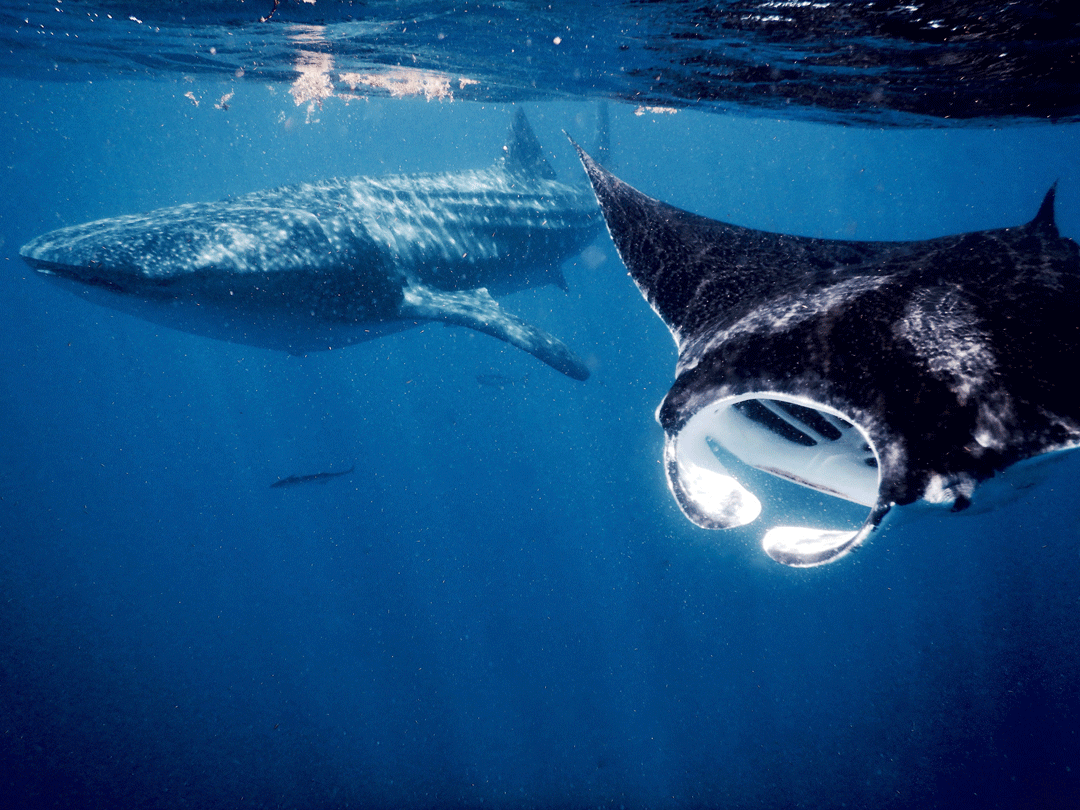Magic Mantas of the Mexico Caribbean
The northern part of the Yucatan Peninsula is where our manta paradise station is located. Isla Mujeres, a 7 km long island, is home to the Mexico Caribbean Manta Ray Project (MCMRP) during the summer. From May to September we are surrounded by mangroves, reefs and the beautiful colours of the Mexican Caribbean ocean.

Photo © Karen Fuentes
In 2016 the government created the Mexican Caribbean Biosphere Reserve. Its 5.7 million square hectares of protected water are home to nearly 1,900 species of flora and fauna, including around 500 species of fish and 86 species of coral. It is a very special location for two of the largest fish in the world, each year whale sharks and manta rays visit the Reserve to feed. Here waters from the Caribbean meet the Gulf of Mexico, driving significant upwellings of plankton-rich water from the depths to the ocean surface, providing a veritable feast for hungry planktivores! The waters of the Mexican Caribbean Biosphere Reserve are so productive that it is the site of one of the biggest, if not the biggest, concentrations of whale sharks in the world!

Photo © Karen Fuentes
Our manta rays are found in waters off the northern part of the Yucatan’s Peninsula. They are sometimes seen feeding near whale shark aggregations, but normally they are located around 20 miles offshore. Their remote location makes it difficult and expensive to carry out manta research, so we must get the best out of every field trip by collecting as much data as possible. Research activities include: taking manta photos for identification, observing and recording manta behaviour, collecting plankton for analysis, trawling for microplastics and using our CTD instrument to measure water conductivity, temperature and pressure. We also make use of drones to monitor mantas from the air.

Photo © Arturo Martínez
Every year we welcome volunteers from all around the globe; taking part in a programme designed to give them valuable work experience, inspire a greater passion for marine conservation and scientific research, and of course, get them in the water with lots of majestic manta rays. A vital element of the programme is community outreach, so every year our volunteers help other non-profits in the area and contribute their time and skills to benefit local people.

Photo © Karen Fuentes
In 2018, for the first time, our volunteers were all women! This fantastic team had a diverse mix of personalities, backgrounds and languages, and together we accomplished so much it blew my mind. Our team came together from Italy, Belgium, India, the Netherlands, USA, UK and Mexico, with a shared passion for marine science, conservation and mantas. Although we still have a long way to go, I think it is exciting that there are more opportunities than ever for women to get involved in science, and to have a voice in this important sector.

Photo © Karen Fuentes
During their time working for us, volunteers learn how to deploy all our research instruments and manage our manta ID database, and they gain new skills in community outreach and communications. However, it is not only the volunteers who benefit from this education, our boat captains and deckhands all get involved with research and conservation efforts too. We always use boats owned and run by local island people, and year-on-year I see the local community’s concern for marine environmental issues grow as a result. Through the work of the MCMRP and other local NGOs, local communities are learning more about threats to the oceans and the crucial role that they can play in conserving and safeguarding the natural resources in their region.
The MCMRP is part of the Manta Trust’s global network of affiliate projects. You can view their website here.
